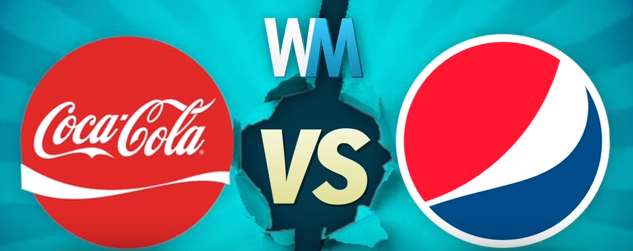A duopoly is a market situation that entails two competing companies that share the market. In this market, two brands can collude to set prices or quantities and make customers pay more money.
As with any market structure, a duopoly has a significant impact on how companies interact with each other. Since there are only two players within the market, the actions of one will affect the other’s response and activity. They also influence the way a company operates and how it produces and promotes its products.
In this article, we’ll uncover the features of a duopoly and its advantages and disadvantages and make the difference between a duopoly and an oligopoly clear. Then, we’ll review the types and examples of a duopoly.
Features of Duopolies
Duopoly is a market structure similar to oligopoly. However, it still has some distinctive features. The first thing that distinguishes this market structure is that there are only two companies that share the market. Secondly, both businesses that exist within a duopoly are interdependent. To win the attention of customers, companies often take strategic actions, such as price reductions. If one company makes its product cheaper, the other will follow. This is necessary to attract consumers and encourage them to purchase.
It’s worth mentioning that players can collude to determine a price or output or maintain a competitive environment for significant profits. Since companies in a duopoly take different measures to develop brand loyalty and implement low-pricing strategies, it’s hard for new firms to enter. As a result, sales volume and revenues are good enough because there is only one competitor and the barriers to entry are high.
Knowing the features of this market situation allows you to proceed to the next section, where we’ll discuss the pros and cons of a duopoly.
Advantages and Disadvantages of Duopolies
A duopoly is a market situation that influences businesses and consumers both positively and negatively.
Its advantages include the absence of other competitors. It gives all the opportunities for two companies to collaborate to receive the highest profits. Simply put, this market situation makes collusive cooperation possible.
Firms in a duopoly don’t strive to bring new products or services to the market. They rather concentrate on bringing innovation to their existing products and services. Considering that the market is divided only between two businesses, it’s worth pointing out that they are the ones to control prices and prevent other companies from entering the market.
The main disadvantage of a duopoly is that it creates limits for free trade. The existence of only two companies within the market significantly limits the choice of products for customers. It’s difficult for new firms to join the market and obtain some market share because of the barriers that existing companies create. One more drawback of a duopoly is that it involves price fixing and collusion. As a result, consumers have only a few alternatives and still have to pay a high price.
Duopoly vs. Oligopoly
Both duopolies and oligopolies create high barriers to entry, making it impossible for new companies to enter. They are also similar in terms of authority and power their players have since the competition is low. Moreover, businesses within these market structures choose cooperation rather than competition to maximize their profits. After all, the number of companies is limited, so customers have only a few alternatives.
However, a duopoly and an oligopoly differ in the number of companies their markets have. In an oligopoly, we can see a small number of companies (two and more), while in a duopoly, the number of players is always limited to two, and the market is divided in half. In a duopoly, firms have monopoly power and are interdependent in their strategies. The decision of one business will definitely influence the other company.
Now it’s time to move to the types of a duopoly.
Types of Duopolies
Duopolies can be divided into two main groups:
- Cournot duopoly. According to this duopoly, the output of produced goods and services shapes the competition between players. Businesses in this market system manufacture a certain amount of products to maximize their profits. Besides, firms have to negotiate to divide the market. In the long run, companies establish stable prices and output. This type also excludes the presence of collusion.
- Bertrand duopoly. In this market situation, prices shape the nature of competition between companies. Customers opting for the firms with the lowest price can cause price war and high competition between players. Consequently, brands implement low-pricing strategies and lose profit while consumers enjoy purchasing products or services for incredibly low prices.
Long story short, the two types differ in triggers that cause competition between players within the market situation. Let’s proceed to the examples of duopolies to see how that works in real life.
Examples of Duopolies
Sometimes it’s really helpful to review several examples to fully understand some marketing definitions. That’s why now we’ll discuss six large companies — prime examples of duopolies.
Mastercard and Visa
The two famous payment solution companies are a great example of a duopoly. Together, they own approximately 80% of all European Union card transactions. It’s no secret that both corporations have strong pricing power and prove resilient against payments newcomers.

Pepsi and Coca-Cola
The two companies that are famous for their carbonated drinks are the embodiment of a duopoly. According to Statista, the market share of Coca-Cola company was 43.7% in 2019. At the same time, the market share of Pepsi amounted to 24.1%.

Airbus and Boeing
The market share of airplane manufacturing is concentrated between Airbus and Boeing. The competition between the most prominent manufacturers of airplanes in the world is fierce.

To conclude, companies in a duopoly are either competitors or partners in collusion. Everything depends on the situation. The market structure entails fixed pricing, price wars, and a few alternatives for customers.
Resources:
- This article defines the term and uncovers the advantages and disadvantages of a duopoly.
- In this article, readers can find the examples and models of a duopoly.
- This article covers the definition, types, and significance of a duopoly.
Last Updated: 22.03.2023

or